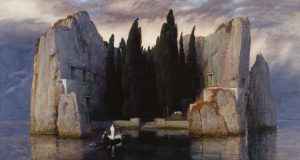Happy Halloween!
Halloween is a funny holiday. It has its light, fun side, with kids, costumes, candy, parties. It also has a darker side, making us contemplate death as the summer world “dies” into winter. Somewhere in between, we delight in facing our darkest fears from a safe distance – like watching a horror movie from the safety of our living rooms.
The Dance of Death is an old allegory for the harsh reality of life – no matter who you are in life, how important or unimportant, we all end up dead in the end. Perhaps this holiday helps us address this reality with a sense of humor. Camille Saint-Saëns‘ famous symphonic poem, Danse Macabre, had its beginnings as an art song that he wrote, in which death plays his violin, calling souls to their death. Shortly after he wrote it, Saint-Saëns expanded, adapted, and crafted into this Halloween favorite. It follows a predictable, but fun hallows eve legend – death awakens at midnight, dances his wild dance, but returns to the grave with the morning sun.


Recent Comments